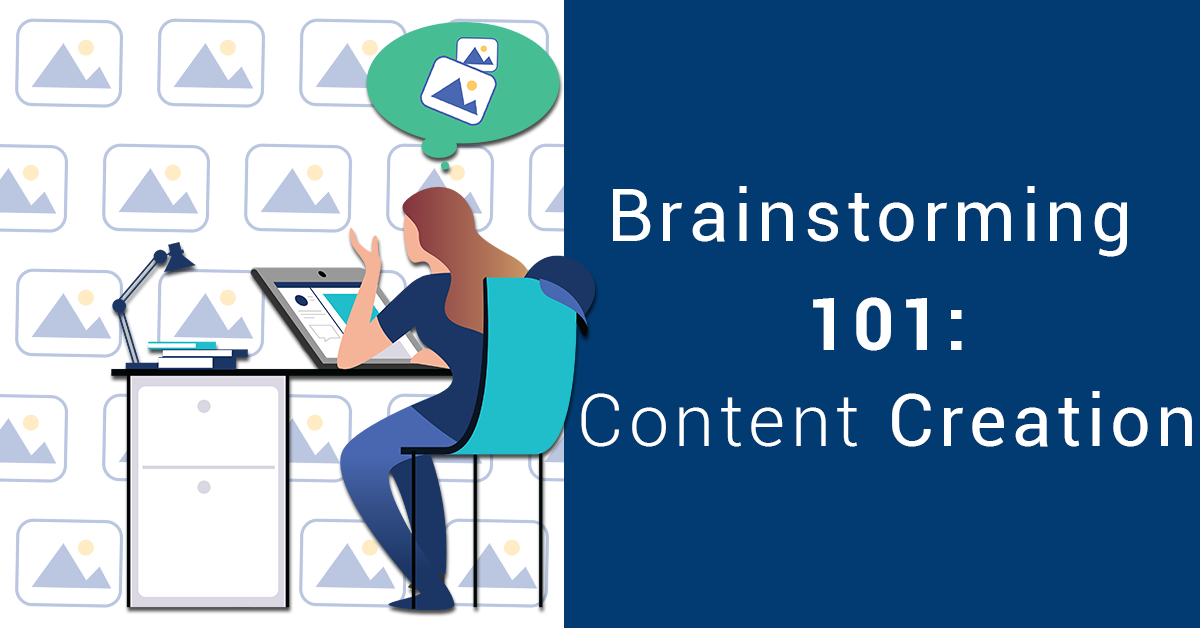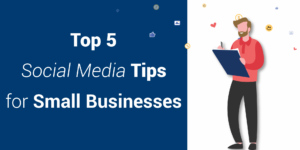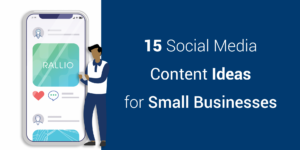Content writing is an art and a science. The art comes in the form of beautiful imagery and word wizardry. The science comes in the form of carefully crafted phrases, written in just the right combination of characters.
Even the greatest email promotions of all time won’t get opened without a great subject line. The most engaging photos fall flat on social media without thoughtful, engaging captions. And even the most articulate of prose won’t be read without an intriguing headline.
Staring at the screen and scratching your head won’t magically allow words to materialize on the page. Throwing together a careless email, caption or headline is a quick way to lose out on readership. So why do the words on a page or a screen matter so much? And how can you improve your content writing skills?
Content Writing 101
The goal of any marketing piece is to inspire a reader into action. There can be all kinds of different actions you want from your audience, such as:
- Open an email
- Click on a link
- Share your content with friends
- Read your article and take various actions based on the content
- Follow you
- Revisit your content because it’s just that great
These are just a few examples of actions your readers might take when you have well-written marketing messages. The way you word your emails, captions and headlines can help you guide your readers toward the desired action. Your content writing should be a reflection of the various marketing goals you have.
If you tend to get stuck trying to put together attention-grabbing subject lines, headlines and social media captions, just know you’re not alone. Even seasoned writers get writer’s block. Plus, marketing messages are tricky — you could lose your reader before they’ve even opened your email, for example.
The good news is that you can get better at content writing with practice. Our tips below will start you off on the road to compelling emails, headlines and social media captions.
Related: Brainstorming 101: 6 Quick Tips to Spur Content Creation

Email Subject Lines
Quick — check the number of unopened emails in your inbox. Is it 10? 100? 10,000? The fact is, many emails sit unopened or get deleted simply because the subject line wasn’t enticing enough.
There are many different ways to structure your email subject lines in order to get people to open them. The style you choose depends on the goal of your campaign as well as whether you have an existing relationship with the customer or prospect.
- Informational — Straightforward, no-nonsense subject lines are used to convey important information such as order updates, shipping notifications, a privacy notice or other details that are specific to that user. Example: “Your order has shipped”
- Funny — A well-placed quip or play on words can help your email stand out from the crowd. Example: “Our eggs are hard to beat” for a breakfast restaurant.
- Attention-grabbing — Used sparingly, shock value can spice up your subject lines, but proceed with caution. Avoid offensive or incendiary language in favor of intriguing text that makes a reader pause and want to open the email. Example: “Just give up” to promote a coaching program that helps people give up refined sugar.
- Short and sweet — A single word or just a few words make your subject lines easy to digest in an overcrowded inbox. Example: “Be brave” for a seminar featuring a prominent author.
- Numbered — Our brains are drawn to digits, so anytime you throw a number into an email subject line, it’s more likely to draw attention. Example: “10 signs you’re a 90s kid.”
- Personalized — Great for remarketing and local offers, personalized subject lines work well for targeting people who looked at your products or services but didn’t buy, or for attracting your local audience. They can also tap into the “scarcity factor” for people who don’t want to miss out. Example: “Last chance: This offer won’t last” or “Your cart is calling” for abandoned carts; throw in a discount code to encourage the user to return to your site. Note: You can also use names to personalize emails, but avoid overuse as these emails may be viewed as spam.
A few final thoughts on email subject lines:
- Use A/B testing to try out different subject lines as well as variations on initial caps/no caps with your text. Your open rates will tell you what works best with your audience.
- Don’t go overboard on your character count. Around 50 characters or fewer is a good guideline.
- Write several different subject lines before settling on the one or two you like. Again, you can A/B test different versions.
Headlines for Blogs, Website Pages and Marketing Materials
Many of the same guidelines used for email subject lines apply to headlines, too. Like your subject lines, your headlines are one of the first things people see if they’re viewing your blog or website, or if they’re seeing a link preview on social media.
According to CoSchedule, eight out 10 people will read a headline, while only two out of 10 people will click through. That means your headlines need to grab their attention right away in order to give your content a chance of being read.

To get started with headline writing, walk through the steps below. Above all, commit to doing a lot of headline writing before you decide on the one you’ll use for any particular piece of content.
- Take a look at the headlines on some of your favorite articles you’ve read. Which words drew you into the article? Write down the words or numbers that caught your attention.
- Write down 10 to 20 possible headlines for your content. Walk away for a bit and let your list sit. Take a literal walk if needed. Come back with fresh eyes, and cross out any headlines you immediately know won’t work. Now choose your top five.
- If you have a writing team, float your headline ideas to them and see which ones they like best. If you don’t, that’s OK, too. Pick your favorite and publish your post.
- Now you can test out different versions of your headline on social media. Tweet out your article using both the published headline and some of your alternates to see what kind of traffic you get.
The process above is a great way to get started with headline writing. The more you practice, the better you’ll get, and the more you’ll understand what resonates with your audience.
Learn more: 73 Easy Ways To Write A Headline That Will Reach Your Readers
Social Media Captions
And now for social media captions. The captions you write will vary based on the intention of the post. An inspirational, “straight from the heart” post might be longer than a video post that relies more on people viewing the video than reading your caption, for example.
The advantage of social media marketing is that you have more of a “complete package” to present to your readers — with engaging visuals that capture their attention as they scroll. Captions also make you more discoverable because you can incorporate hashtags that help people find you.
Again, the more you write captions, the better you’ll become at it. Follow these guidelines as you write:
- Identify the “why” behind your post. Is it to create a connection with your readers? Do you have a specific action you want them to take? Do you want to showcase your personality? The words you choose should reflect the intention of the post.
- Encourage interaction by asking open-ended questions. Imagine sitting down with a friend and chatting. Be conversational so your audience is more likely to post their replies. A photo of your green smoothie becomes instantly more engaging if you ask, “Is it just me, or do green smoothies taste better when the sun is shining?”
- Include calls to action sparingly. Not every post should ask your readers to take action. How irritating is it to see a brand constantly ask you to “click here” or “download this”? Instead, sprinkle in these posts amid your inspirational, entertaining or informative posts — which should comprise the bulk of your content.
Learn more: 7 Tips for Creating Engaging Social Media Captions
The More Content Writing You Do, the Better You’ll Get
Not every single thing you write is going to be award-worthy, and that’s OK. Content writing takes trial and error and lots of practice. Over time, you’ll get to know your audience and how they respond to your content, and you can make any tweaks along the way.
Make sure you’re regularly reviewing your analytics to see how your words are landing. Rallio’s SaaS platform helps you pull in insights from various platforms and see how your content is performing. To see how it works and request a demo, head over to rallio.com.


